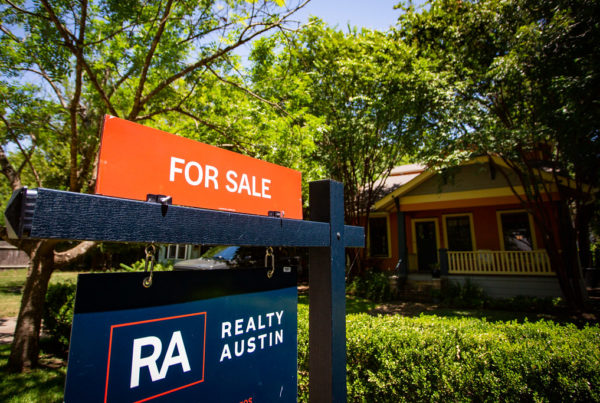From KTEP:
The figures in pale camouflage uniforms are visible in key spots along this border, from the fence jutting high above the desert in Anapra to the muddy banks of the shallow Rio Grande near downtown Juárez.
“These points are strategic,” said a Mexican National Guard member in Juárez who did not want his name used because he is not authorized to do interviews. “The flow of migrants is reduced because of our presence here.”
He and a partner stood in the shade of a small tree, long guns slung over their shoulders as a couple of neighborhood dogs napped nearby.
It’s been nearly two years since the first members of Mexico’s National Guard arrived in Juarez. President Andrés Manuel López Obrador, under threat by former President Donald J. Trump to impose high tariffs on Mexican goods, deployed about 15,000 of Mexico’s newly formed National Guard to both of the country’s borders in the summer of 2019 amid a surge in migration from Central America.
Members of Mexico’s National Guard patrol at the Río Grande near the Casa de Adobe, at the border of Chihuahua, Texas, and New Mexico. Mexico has deployed the National Guard to both its southern and northern borders as part of an agreement to reduce migration to the United States. Corrie Boudreaux/El Paso Matters
The National Guard has both been touted as effective for border enforcement and criticized for using troops not trained for civilian duty.
As Vice President Kamala Harris prepares to travel to Mexico to meet López Obrador in June followed by a visit to Guatemala, the future role of the National Guard remains a concern for human rights groups and a bargaining chip for the Lopez Obrador administration.
“The meeting with Vice President Harris becomes, in many ways, the substitute for that kind of personal contact between the U.S. and Mexican governments at the highest levels. That hasn’t happened yet during this administration,” said Andrew Selee, president of the Washington-based Migration Policy Institute. The initial contact was via a video call March 1 between President Joe Biden and López Obrador.
Vice President Harris is in charge of the administration’s immigration and border policy, which includes addressing the root causes driving migration. So far, Mexico has agreed to maintain a deployment of about 10,000 troops during the current spike in migration, according to a statement from the White House press secretary.
Members of Mexico’s National Guard patrol at the Río Grande near the Casa de Adobe, at the border of Chihuahua, Texas, and New Mexico. Mexico has deployed the National Guard to both its southern and northern borders as part of an agreement to reduce migration to the United States. Corrie Boudreaux / El Paso Matters
“It’s legitimate for countries to control their borders, and the National Guard has legal authority to participate in this,” Selee said. But there are questions about the long-term deployment. “It’s a force that was created primarily to deal with organized crime, and to deal with criminal elements in society and heavily armed groups. If the intention is to keep the National Guard involved with migration issues, there needs to be an effort to create a part of the National Guard that is specifically trained to work with civilian populations,” he said.
The National Guard’s original mission was to combat drug violence ravaging parts of Mexico when López Obrador took office. But when Trump threatened to impose high tariffs , Mexico’s president quickly mobilized the troops for border duty. Some of the first guard members merely switched the army patch on their uniforms for GN, Guardia Nacional.
Members of Mexico’s National Guard patrol at the Río Grande near the Casa de Adobe, at the border of Chihuahua, Texas, and New Mexico. Mexico has deployed the National Guard to both its southern and northern borders as part of an agreement to reduce migration to the United States.
Corrie Boudreaux/El Paso Matters
After their arrival at the end of June 2019, there was a sharp decline in border crossings.
U.S. Customs and Border Protection numbers show a significant drop in Southwest border “apprehensions” from a 2019 fiscal year peak of 144,116 in in May to 81,777 in July, the first full month the National Guard was on the border.
Mexico’s Foreign Minister Marcelo Ebrard that summer told reporters in the first six weeks his country increased border enforcement, the number of migrants reaching the United States fell by 36 percent.
But as Mexico won praise from the Trump administration, it also faced criticism for doing “dirty work” for the Unite States. One high profile photo of a tearful mother in Juarez with a small boy begging a National Guard soldier to let her cross the border attracted the attention of former President Felipe Calderon, who retweeted the photo adding, “What a shame. Mexico should not have accepted this.”
Human rights concerns and allegations of excessive force persist in parts of Mexico. A soldier shot and killed a Guatemalan man in a car at a border checkpoint in Chiapas in late March. That soldier was taken into custody and could face charges, according to the National Guard.
In September, six guardsmen were detained in connection with the murder of Jessica Silva in Delicias, Chihuahua, according to La Verdad Juarez. Troops fired on Silva and her husband in their car. He was seriously injured but survived.
Soldiers in Mexico have long played a dual role both as enforcer and helper providing disaster relief after hurricanes and earthquakes and now also assisting as Mexico tries to ramp up COVID-19 vaccinations.
The National Guardsman in Juárez said his job includes helping migrants in distress who are injured or ill. The National Guard in Mexico is not supposed to detain migrants but instead work with immigration authorities.
This reporter witnessed unusual scenes in the summer of 2019 of migrant families trying to sneak past National Guard troops in Juárez to surrender to Border Patrol agents in El Paso and request asylum. In one case, a group of parents with children quickly waded across a shallow part of the Rio Grande when National Guard members were not looking and waited near the border fence for Border Patrol agents to pick them up.
Under current policy, most migrants, including parents with children, who manage to reach the United States face quick expulsion under Title 42, a pandemic health order reputedly meant to stop the spread of COVID-19. But some still try to cross again and again. Half a dozen Central American women, most with children, interviewed one afternoon a few weeks ago, said they were not deterred by the National Guard presence.
Others are crossing in more remote areas, said one of the two National Guard members who kept a watchful eye on the Rio Grande near downtown Juárez.
“They put their lives at risk with the sun, snakes, scorpions,” he said. His partner added: “There are entire families, pregnant women, women carrying children, children walking.”
They guard members have given the dogs that hang out with them names. The gold-colored male is “Canelo, like the boxer” the female, “La Negra” is a black Labrador mix.
At night they bark to alert the guardsmen if someone is nearby.
Even so, migrants remain determined to reach the United States.
“It’s dangerous but they still try. Many believe in the American dream,” one guardsman said.
In downtown Juarez, Johana, a 38-year-old mother from Honduras who does not want her full name used, sat on the curb and considered her next attempt to cross after being returned to Mexico. National Guard or not she said, “I’ll make it.”












